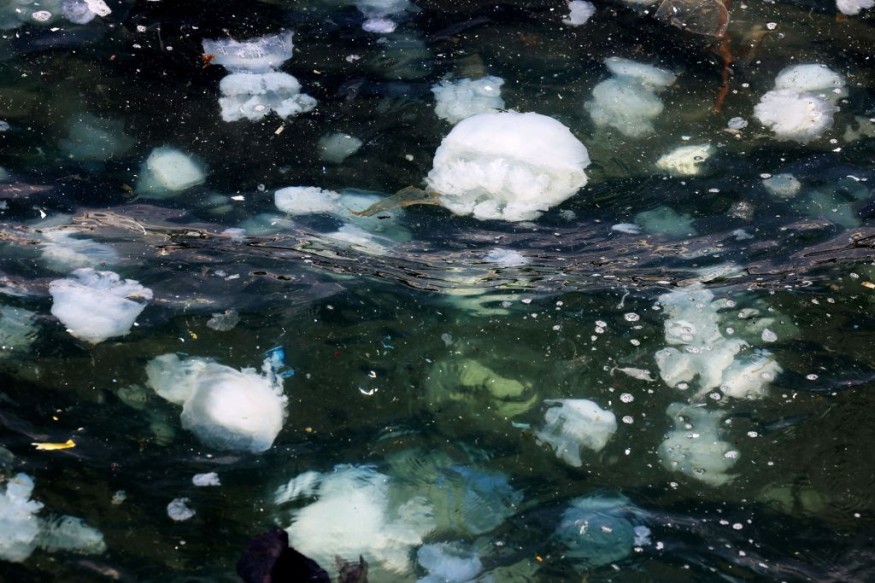Beachgoers in Ocracoke Island, part of North Carolina's Outer Banks, were shocked to find hundreds of jellyfish washed up on the shore on Wednesday, October 12.
The National Park Service (NPS) referred to the gathering as a "jellyfish jamboree" and cautioned the public to stay away from the squishy, gelatinous creatures because although they do not sting, they should be left alone. NPS' Cape Hatteras National Seashore cleared up any confusion for locals or tourists who encountered the unexpected phenomenon in a Facebook post.

What Are the Jellyfish Doing on the Beach?
In the Facebook post, NPS officials wrote that jellyfish depend on water, winds, and currents to help them swim. But colder waters, winds, and currents could push them toward land.
They also identified them as cannonball jellyfish species that typically feast on zooplankton and larvae of red drum fish, which are currently spawning and provide more food for the squishy creatures.
Cannonball jellyfish are the most prominent species of jellyfish on the southeastern coast of the US and are especially abundant during summer and fall, per the Georgia Department of Natural Resources.
Outer Banks is a known destination for the invasion of these round, cannonball-loke dome-shaped jellyfish. NPS shared some photos of the jellyfish jamboree on the shore that were met with various comments ranging from awe and disgust. Someone described the scene as "a lot of squishy" while others simply said "gross!"
NPS authorities left the jellyfish onshore to let nature take its course and bring back the squishy creatures to the sea. They could either be washed back out with the tide or become food for birds or crabs that live on the shore.
READ ALSO : Invasive Jellyfish Species from Australia Was Recently Spotted in North Carolina Beaches
About Cannonball Jellyfish
The cannonball jellyfish (Stomolophus meleagris) have robust, dome-shaped bells that are about 7 to 10 inches wide and 5 inches long, according to ThoughtCo. Those from the Atlantic and Gulf are often brown while those in the Pacific are blue. The sea creatures are 22.8 ounces and have 16 short, forked oral arms and mucus-coated secondary mouth folds known as scapulets.
In terms of habitat, they live in estuaries along coastal shorelines of the Gulf of Mexico, the Atlantic Ocean, and the Pacific Ocean. They can be found from New England to Brazil, California to Ecuador, and the Sea of Japan and the South China Sea. They are carnivores that feed by sucking into their mouth, targeting fish eggs, red drum fish, and planktonic larvae of mollusks and snails.
The male and female cannonball jellyfish are separate animals, although they might look like. Reproduction could also involve both sexual and asexual phases. Males eject sperm from their mouths and females capture them with their oral arms that have special pouches to store embryos.
After three to five hours since fertilization, larvae detach from the pouches and float until they attach themselves to a firm structure. They grow into polyps that trap small prey and reproduce asexually through budding. The offspring detach and become ephyra, which eventually morphs into adult medusa form that lives up to 3 to 6 months.
RELATED ARTICLE : Thousands of Pink Jellyfish Invade Philippines as Beaches Become Deserted Amid Coronavirus Pandemic
Check out more news and information on Jellyfish in Science Times.
© 2026 ScienceTimes.com All rights reserved. Do not reproduce without permission. The window to the world of Science Times.










